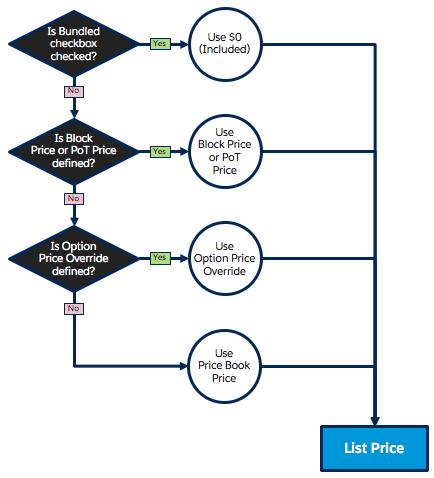Double-Entry Accounting Definition, Types, Rules & Examples
Contents:


Double-entry accounting can help improve accuracy in a business’s financial record keeping. In this guide, discover the basics of double-entry bookkeeping and see examples of double-entry accounting. Double-entry bookkeeping was developed in the mercantile period of Europe to help rationalize commercial transactions and make trade more efficient.

Small businesses can use double-entry bookkeeping as a way to monitor the financial health of a company and the rate at which it’s growing. This bookkeeping system ensures that there is a record of every financial transaction, which helps to prevent fraud and embezzlement. Every business transaction or accounting entry has to be recorded in at least two accounts in the books. The idea behind the double entry system is that every business transaction affects multiple parts of the business.
When you make the payment of $3,595, your cash decreases , and your loan balance decreases by $3,595. T accounts can give you a visual understanding of the double-entry accounting system. Every transaction affects at least two accounts, one for debit and the other for credit. To see double-entry accounting in practice, let’s look at two double-entry accounting examples. Positive answers to the questions above mean your business requires double-entry accounting.
Preventing Errors Through Double-Entry Bookkeeping
The Shareholders’ Equity Statement on the balance sheet details the change in the value of shareholder’s equity from the beginning to the end of an accounting period. For example, when people buy something, it becomes a debit from their pocket or bank account, but the product goes into their credit record as they receive it in return. Similarly, the shopkeeper records the amount on the credit side, and the product taken out of the inventory becomes a debit record. A bookkeeper makes the same entry in two places to reflect two different transaction scenarios.
Accrual Accounting vs. Cash Basis Accounting: What’s the Difference? – Investopedia
Accrual Accounting vs. Cash Basis Accounting: What’s the Difference?.
Posted: Sat, 25 Mar 2017 07:59:39 GMT [source]
This method provides a more complete picture of a business’s finances, and is typically used by larger businesses. The accounting equation defines a company’s total assets as the sum of its liabilities and shareholders’ equity. Essentially, the representation equates all uses of capital to all sources of capital (where debt capital leads to liabilities and equity capital leads to shareholders’ equity). For a company keeping accurate accounts, every single business transaction will be represented in at least of its two accounts. Bookkeeping and accounting are ways of measuring, recording, and communicating a firm’s financial information. A business transaction is an economic event that is recorded for accounting/bookkeeping purposes.
Regarding the transaction, the company records an increase in cash of Rp 3 million. The company also reports an increase in trade receivables of Rp.4.5 million. All three are recorded in current assets so that in total, the company’s asset value has increased by Rp2.5 million. The accounting equation states that assets are the sum of liabilities and shareholders’ equity. Meanwhile, liabilities and equity represent the claims of creditors and shareholders for these resources, respectively. Accounting EntryAccounting Entry is a summary of all the business transactions in the accounting books, including the debit & credit entry.
Advantages
Your account will automatically be charged on a monthly basis until you cancel. There is no limit on the number of subscriptions ordered under this offer. This offer cannot be combined with any other QuickBooks Online promotion or offers. When you send the invoice of $2,500, your receivables increase , and your revenues increase by $2,500. At the end of the year, when you send your profit and loss statement to your tax preparer they don’t see that $12,000 of expenses. Double-entry accounting may sound complicated, but it doesn’t have to be.
This article will cover the definition of credits and debits, what double-entry accounting is, and why it matters for your business. By the principles of double entry accounting, an entry in the current account gives rise to an entry in the capital account, and in aggregate the two accounts automatically balance. Every transaction entered in your journal involves a debit entry in one account and a credit entry in another. You should put the debit entry for a transaction on the left side of the general journal, while the credit entry will be on the right side of the journal. Single-entry bookkeeping is a record-keeping system where each transaction is recorded only once, in a single account. This system is similar to tracking your expenses using pen and paper or Excel.
Accounting Principles Explained: How They Work, GAAP, IFRS – Investopedia
Accounting Principles Explained: How They Work, GAAP, IFRS.
Posted: Tue, 07 Mar 2023 08:00:00 GMT [source]
This means that determining the financial position of a business is dependent on the use of double entry accounting. The double entry system of accounting or bookkeeping means that for every business transaction, amounts must be recorded in a minimum of two accounts. The double entry system also requires that for all transactions, the amounts entered as debits must be equal to the amounts entered as credits.
Advantages of Double Entry System
But first, to understand how the double-entry system works, you need to understand the basic accounting equation. He introduced many economic reforms including use of double entry accounting, joint stock corporations and modern note-issuing banks. While he was not the first economist to work in this field, he was the first to do so with double entry accounting. It was named for the Medici Bank of Florence — a pioneer of the double entry bookkeeping that revolutionized money and banking in the Renaissance. Keeping accurate financial records of your transactions is essential for your business’s growth. Tasks such as preparing a budget, checking for tax compliance, and evaluating business performances; can help your decision-making.
Double-https://1investing.in/ bookkeeping is the concept that every accounting transaction impacts a company’s finances in two ways. Using this system reduces errors and makes it easier to produce accurate financial statements. The first case denotes a debit record and a corresponding credit, indicating a net effect, which comes to zero. Although three accounts were given effect in the second case, the net entry between debit and credit is 0. Hence, the double-entry system of accounting suggests that every debit should have a corresponding credit.
What is the double entry system of accounting?
It’s also apparent that rent money came from your cash account. Money flowing through your business has a clear source and destination. It looks like your business is $17,000 ahead of where it started, but that doesn’t tell the whole story. You also have $20,000 in liabilities, which you’ll have to pay back to the bank with interest.
For decades, ranching, mining and railroad workers living around Antelope entered the double entry doors to socialize and receive support when needed. Steps off the circular driveway lead up to a portico supported by thick columns and protecting an arched double entry door. The house, which sits on a 1.6 acre lot, is a one-story contemporary Mediterranean style and features dramatic double entry doors that open onto a grand foyer with 33-foot ceilings. Fundu specializes in business lines of credit and merchant cash advance funding. Debit and credit represent the increase or decrease in the value of an account. While single-entry has its perks when discussing Single entry vs. Double Entry, there are advantages double-entry has over single entry.
When you receive the money, your cash increases by $9,500, and your loan liability increases by $9,500. Total assets must always equal total liabilities plus equity of a business. There are always two sides to the event even if two assets are traded. When a company buys a new delivery car, it gives the car dealership cash and receives the car in exchange. One asset is going out and one asset is coming in—two sides to the transaction.
Features of Double Entry
A sub-incremental cost may be kept for each individual account, which will only represent one half of the entry. The general ledger, however, has the record for both halves of the entry. When Lucie purchases the shelving, the Equipment sub-ledger would only show half of the entry, which is the debit to Equipment for $5,000. The Credit Card Due sub-ledger would include a record of the other half of the entry, a credit for $5,000. The general ledger would have two lines added to it, showing both the debit and credit for $5,000 each. It’s possible to manually create multiple ledger accounts, but if you’re making the move to double-entry accounting, you’ll likely want to make the switch to accounting software, too.

Glancing back at these entries, you’d also have no idea which account the $3,000 for rent was withdrawn from. This is why single-entry accounting isn’t sufficient for most businesses. The entry is a debit of $8,000 to the cash account and a credit of $8,000 to the common stock account. Every transaction recorded with the double entry system has a debit and its corresponding credit. Since then, she’s realized that the single entry system isn’t the best fit for her business, and so in this blog, she will be using the double entry system of accounting.

Adam Hayes, Ph.D., CFA, is a financial writer with 15+ years Wall Street experience as a derivatives trader. Besides his extensive derivative trading expertise, Adam is an expert in economics and behavioral finance. Adam received his master’s in economics from The New School for Social Research and his Ph.D. from the University of Wisconsin-Madison in sociology.
This means that you are consuming the cash asset by paying employees. You deduct cash and add a pen – meaning cash has been credited and pen has been debited. Unlike the simple single entry system which can be done by anybody, the double entry system needs skill and expertise. Remember in this blog, the owner of Razor Bakery, Mrs. Pay, used the single-entry system to record her transactions.
- The first entry to the general ledger would be a debit to Cash, increasing the assets of the company, and a credit to Equity, increasing Lucie’s ownership stake in the company.
- This is how you would record your coffee expense in single-entry accounting.
- If you don’t use double-entry accounting, your receivables will increase but you’ll be overstating your inventory.
- Accounting EquationAccounting Equation is the primary accounting principle stating that a business’s total assets are equivalent to the sum of its liabilities & owner’s capital.
- Double-entry accounting is a system that requires two book entries — one debit and one credit — for every transaction within a business.
- For every transaction completed in your business, you must debit one account and credit another for the same amount.
Using double-entry accounting, with just a glance at your trial balance, you and your tax preparer would see a missing $5,000 in either the debit column or credit column. Once you investigated and corrected the error, you can take advantage of that valuable tax deduction. If that all sounds like a foreign language, don’t give up just yet!
